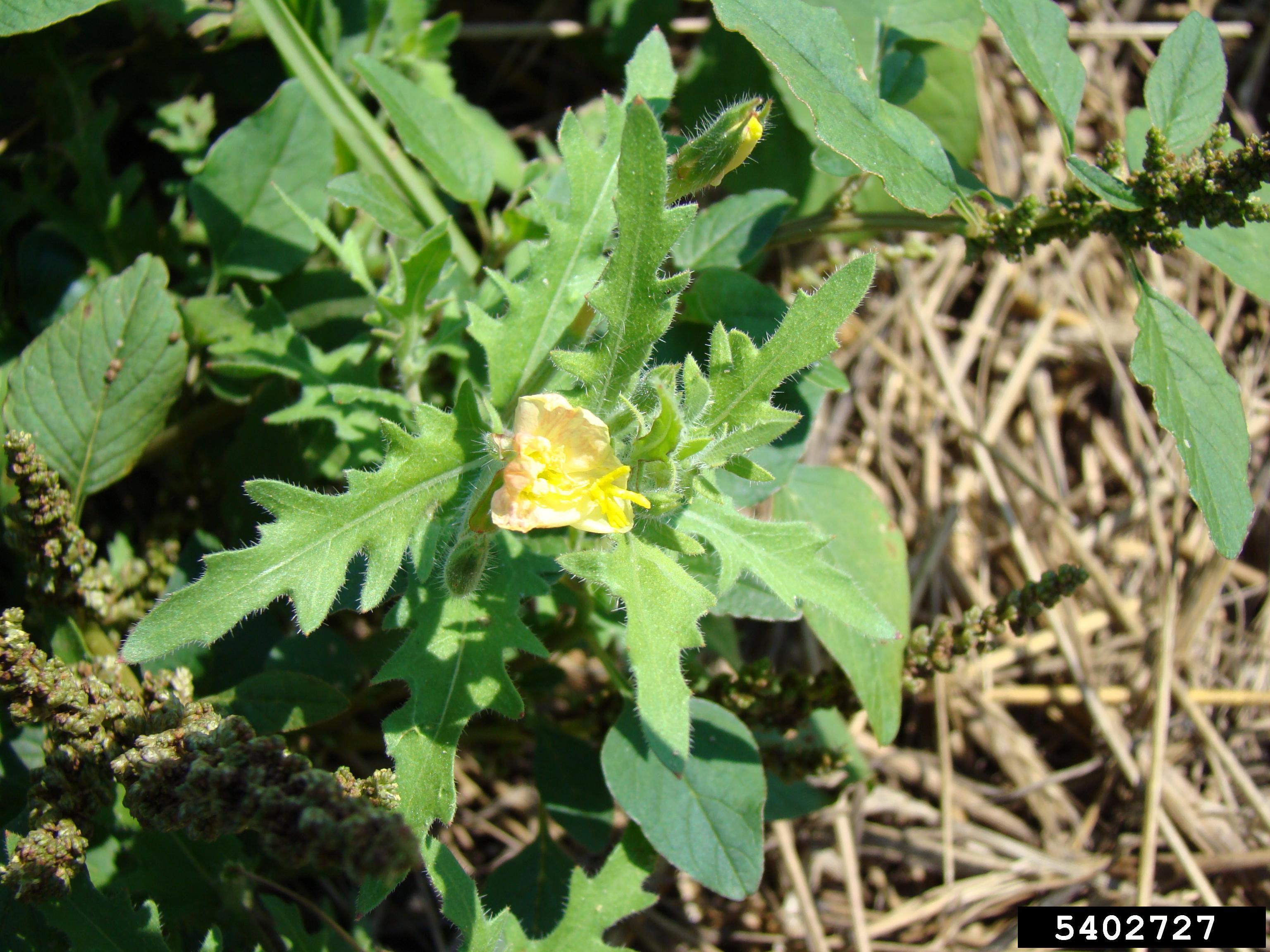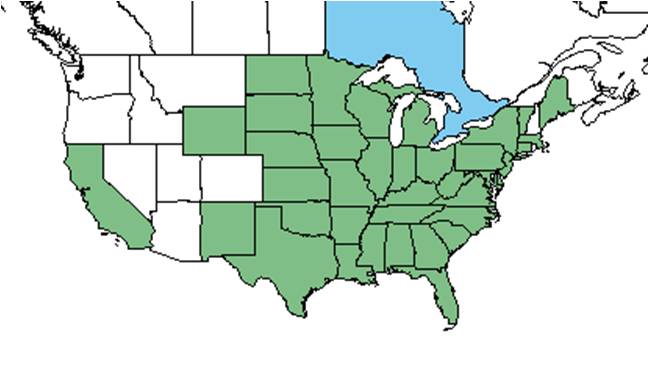Oenothera laciniata
| Oenothera laciniata | |
|---|---|

| |
| Photo by Rebekah D. Wallace, University of Georgia, Bugwood.org | |
| Scientific classification | |
| Kingdom: | Plantae |
| Division: | Magnoliophyta - Flowering plants |
| Class: | Magnoliopsida – Dicotyledons |
| Order: | Myrtales |
| Family: | Onagraceae |
| Genus: | Oenothera |
| Species: | O. laciniata |
| Binomial name | |
| Oenothera laciniata Hill | |

| |
| Natural range of Oenothera laciniata from USDA NRCS Plants Database. | |
Common name: cutleaf evening primrose
Contents
Taxonomic notes
Description
"Usually pubescent, branched biennials or perennials. Leaves alternate, the upper reduced, sessile or subsessile, the lower frequently petiolate. Inflorescent terminal, flowers solitary from axils of bracts or reduced upper leaves. Calyx tube (hypanthium above ovary or capsule) prolonged; lobes (sepals) 4, acute. Petals 4, yellow, pink, or white, usually widely obcordate. Stamens 8, exserted; stigmas 4. Capsules oblong to obovoid or clavate; seeds numerous, not comose." - Radford et al 1964
"Pubescent biennial, usually with decumbent, basal braches, stems to 7.5 dm long. Leaves oblanceolate to elliptic, pubescent to glabrate, acute, irregularly lobed or pinnatifid, repand or almost entire, base attenuate; petioles absent or to 3 cm long on basal leaves. Calyx tube 2-2.5 cm long, lobes 6-12 mm long; petals yellow to reddish, 8-25 mm long; anthers 3-6 mm long. Capsules pubescent, cylindric, usually slightly arcuate, 2.5-4 cm long, 3-4 mm broad; pedicels absent or to 5 mm long; seeds brownish, angulate, 1.2-1.4 mm long, ca. 0.8 mm broad, pitted." - Radford et al 1964
Distribution
Ecology
Habitat
In the Coastal Plain in Florida and Georgia, O. laciniata occurs in shrub bogs, pine flatwoods, and pine savannas. It is observed to be a ruderal species and has been found in disturbed areas such as sandy vacant lots, moist roadsides, fallow fields, and railroad beds (FSU Herbarium). Soil types include sandy loam, loam, and loamy sand (FSU Herbarium). Associated species include Drosera, Calopogon, Briza, and Cerastium (FSU Herbarium).
Phenology
It has been observed flowering January through May and fruiting January through June (FSU Herbarium).
Seed dispersal
Seed bank and germination
Fire ecology
It has been observed growing in annually burned pine savannas (FSU Herbarium).
Pollination
The following Hymenoptera families and species were observed visiting flowers of Oenothera laciniata at Archbold Biological Station (Deyrup 2015):
Vespidae: Polistes dorsalis hunteri
Use by animals
Diseases and parasites
Conservation and Management
Cultivation and restoration
Photo Gallery
References and notes
Deyrup, M.A. and N.D. 2015. Database of observations of Hymenoptera visitations to flowers of plants on Archbold Biological Station, Florida, USA.
Florida State University Robert K. Godfrey Herbarium database. URL: http://herbarium.bio.fsu.edu. Last accessed: October 2015. Collectors: Miguel Altieri, Loran C. Anderson, Robert Blaisdell, K. Craddock Burks, Andre F. Clewell, George R. Cooley, A.H. Curtiss, Suellen Folensbee, Robert K. Godfrey, M. Knott, R. Komarek, Robert Kral, Richard S. Mitchell, Joseph Monachino, J.B. Nelson, Gwynn Ramsey, Cecil R. Slaughter, Bian Tan, L.B. Trott. States and Counties: Florida: Alachua, Columbia, Dixie, Duval, Franklin, Holmes, Jackson, Jefferson, Leon, Liberty, Madison, Okaloosa, Pasco, Pinellas, Polk, Putnam, Taylor, Wakulla. Georgia: Grady, Seminole. Compiled by Tall Timbers Research Station and Land Conservancy.
Radford, Albert E., Harry E. Ahles, and C. Ritchie Bell. Manual of the Vascular Flora of the Carolinas. 1964, 1968. The University of North Carolina Press. 750-2. Print.